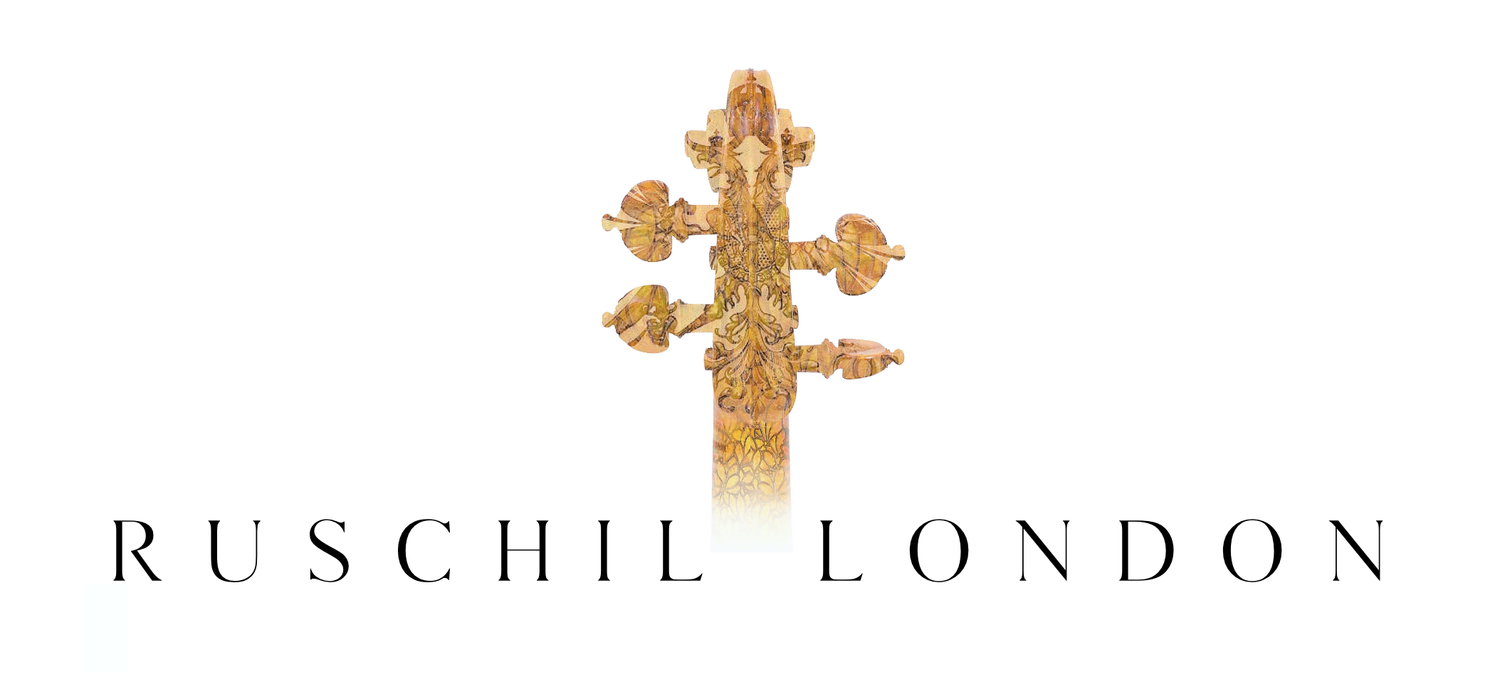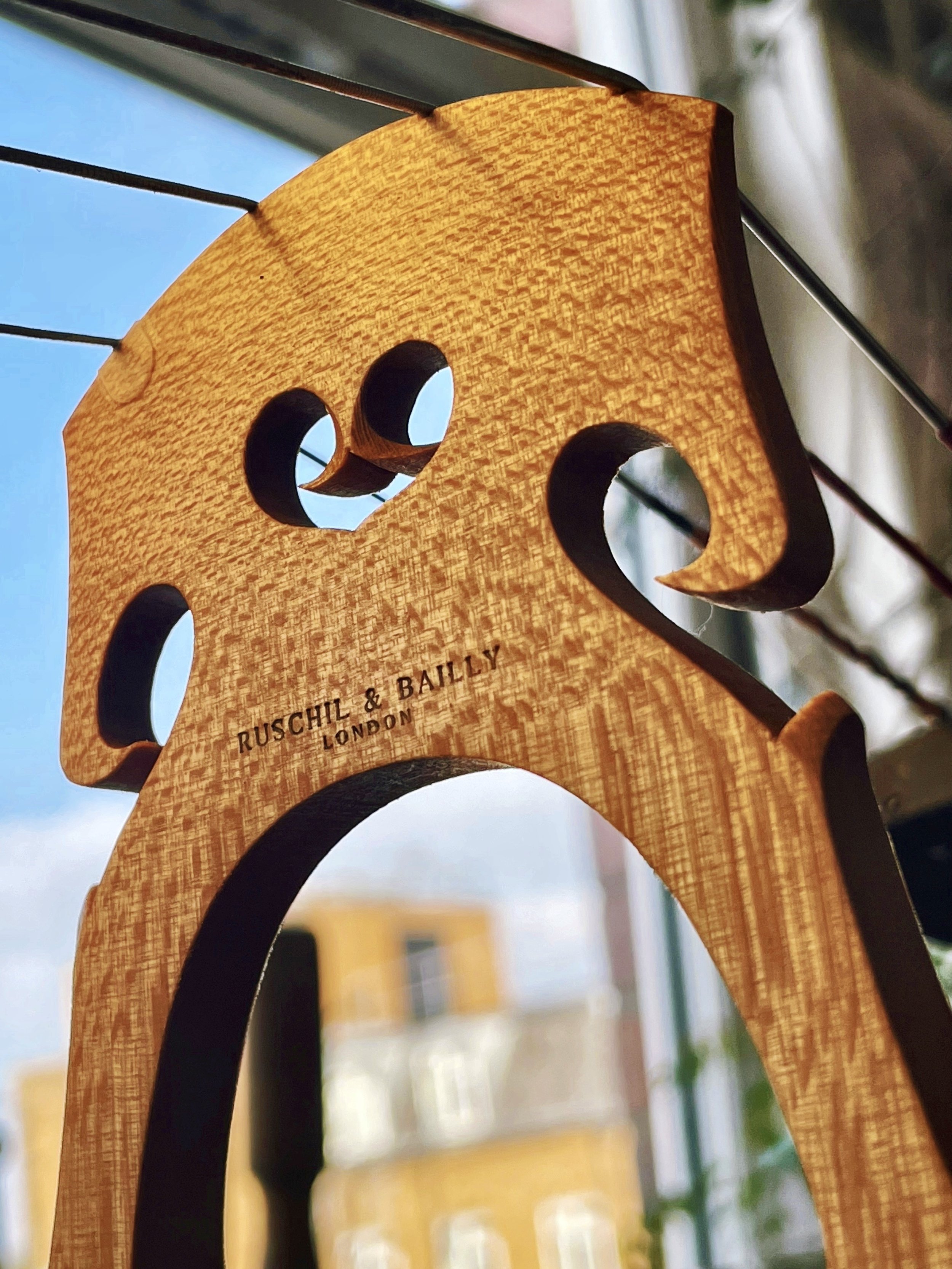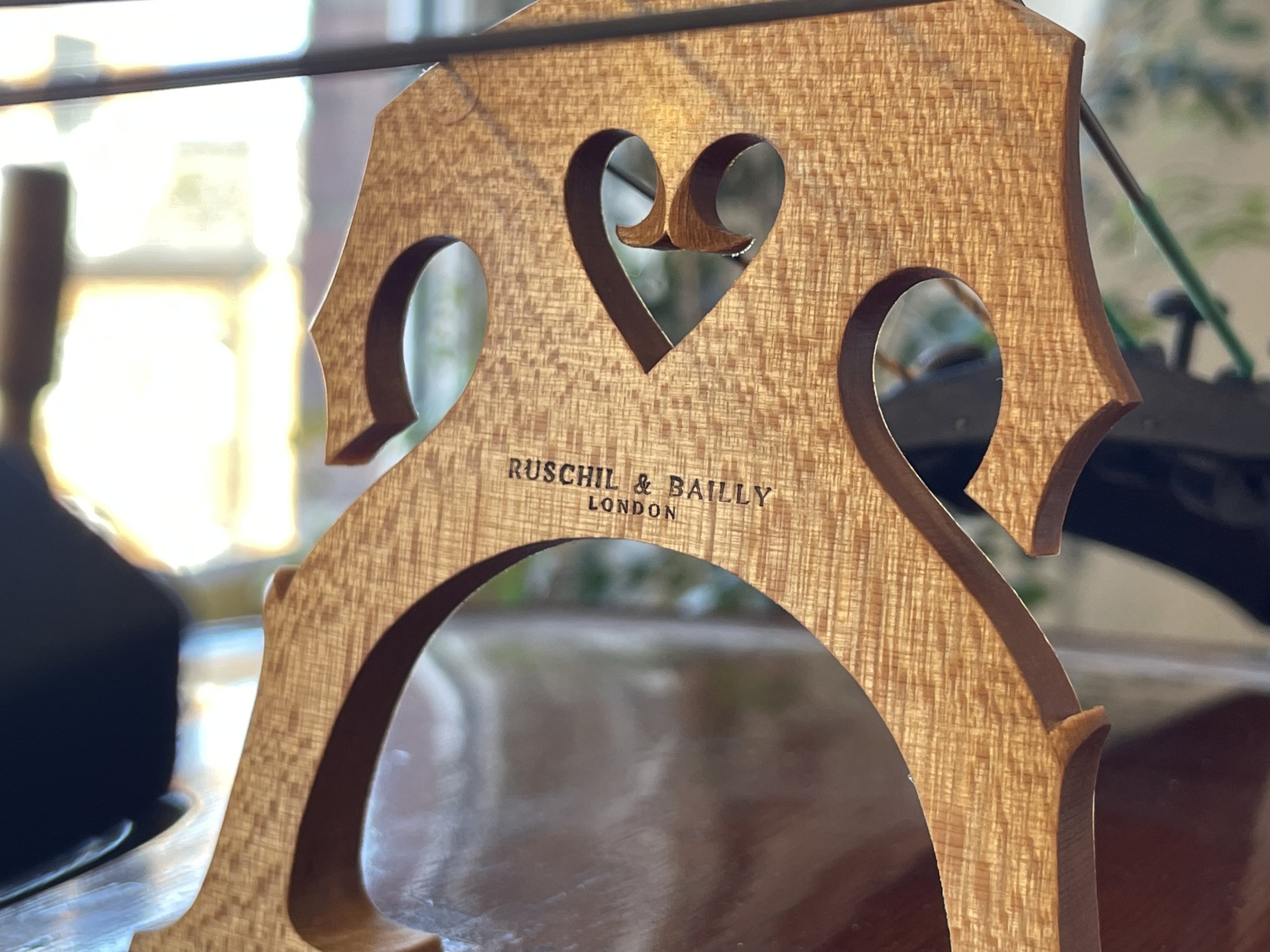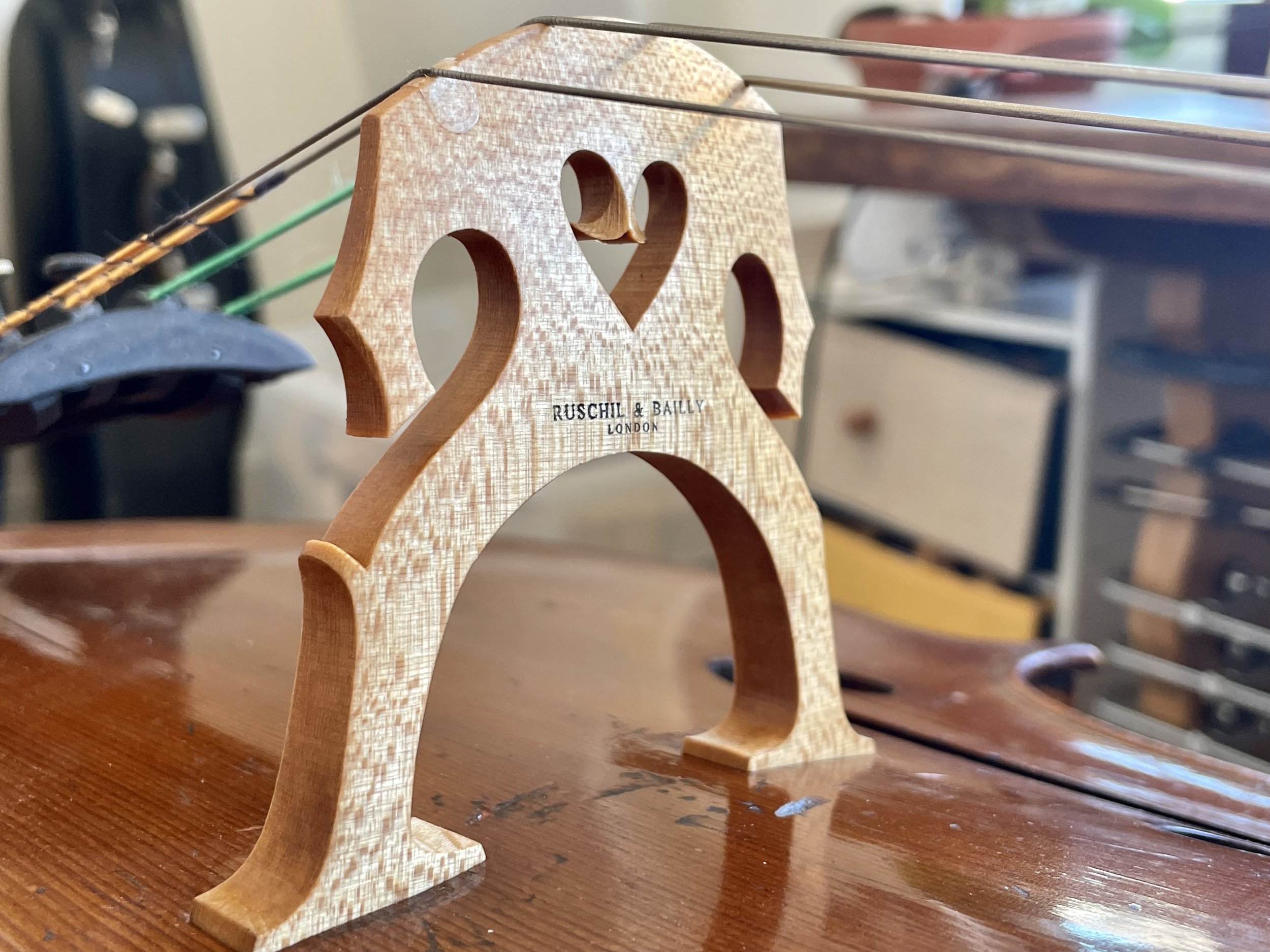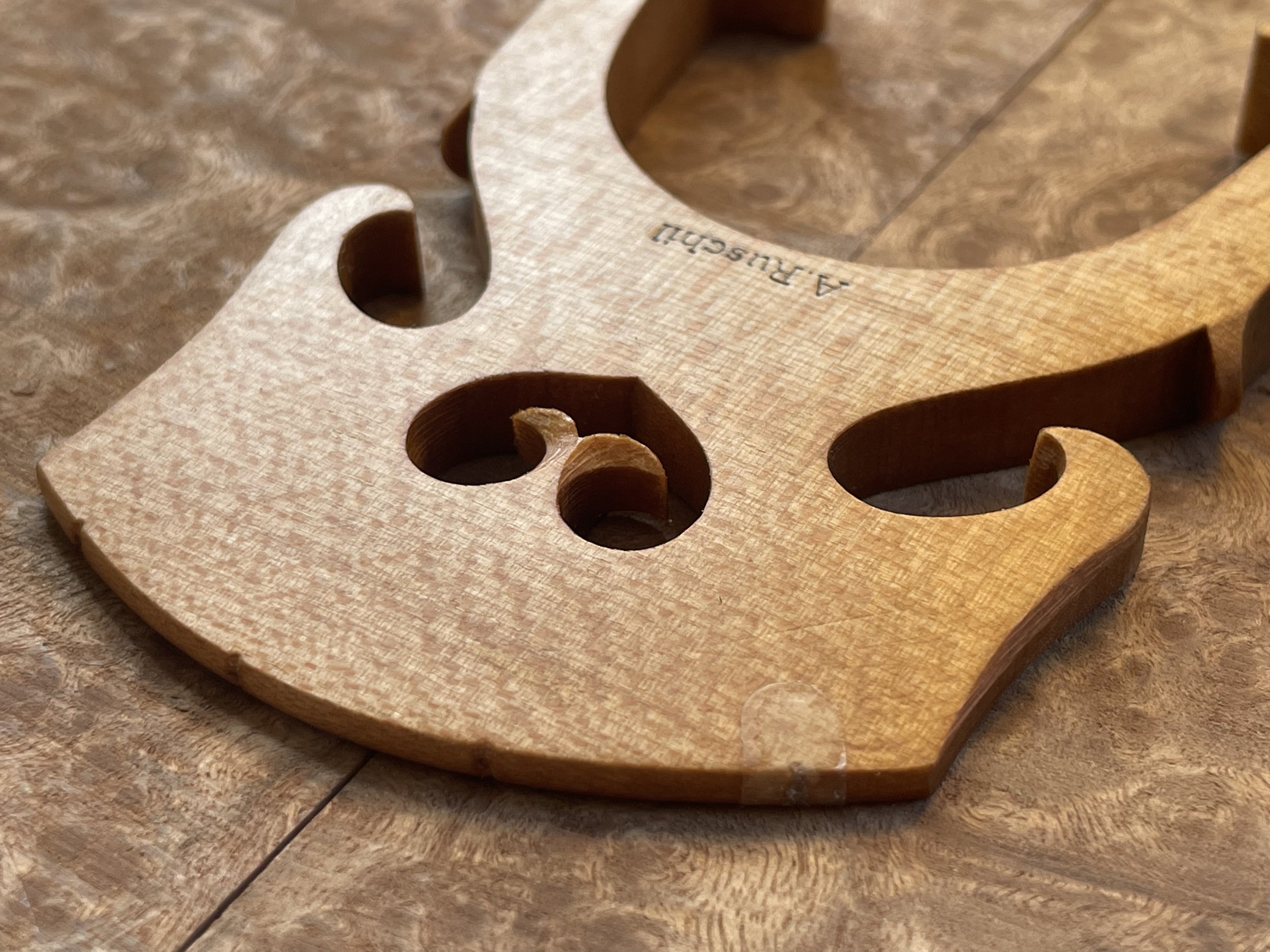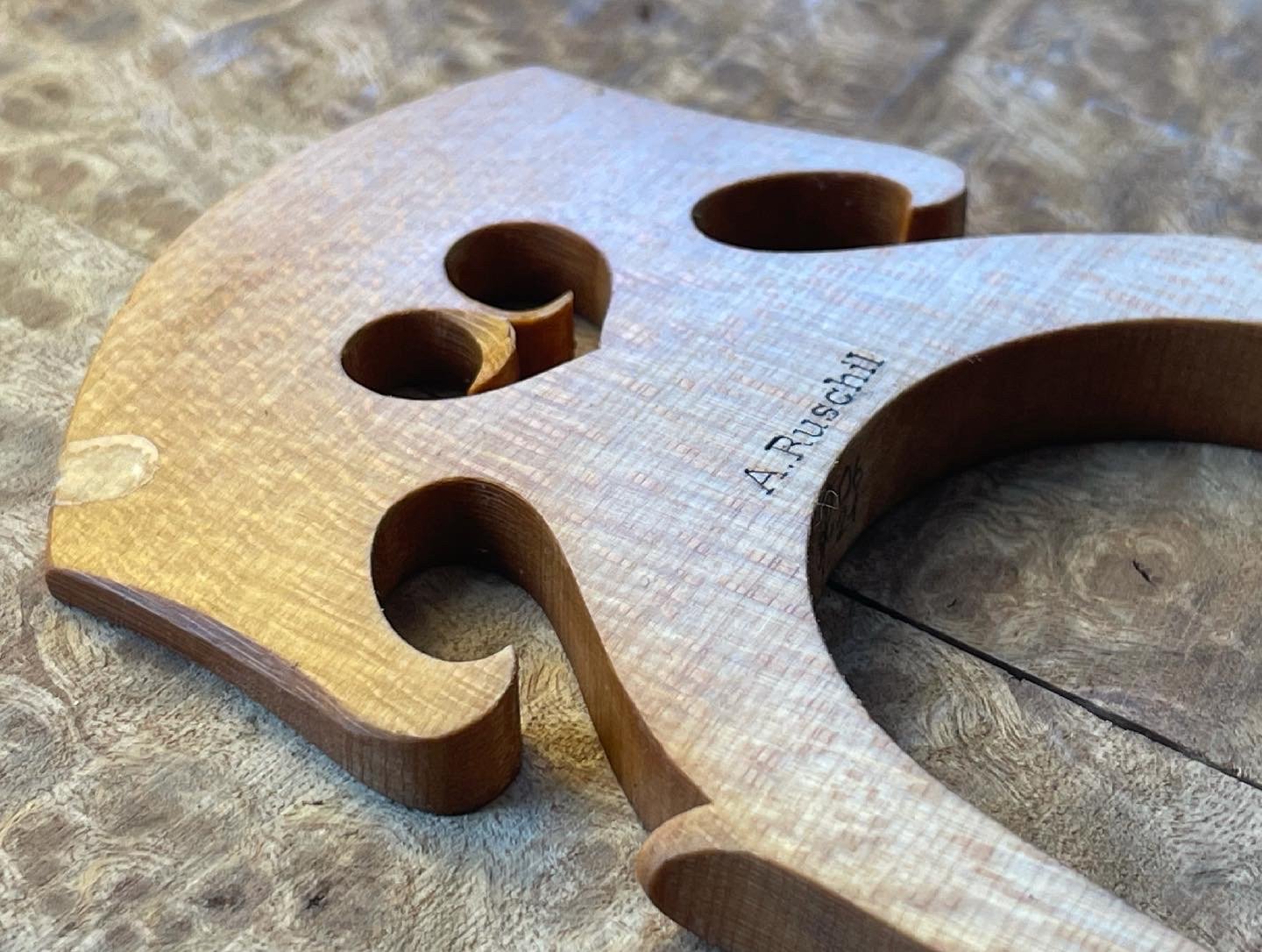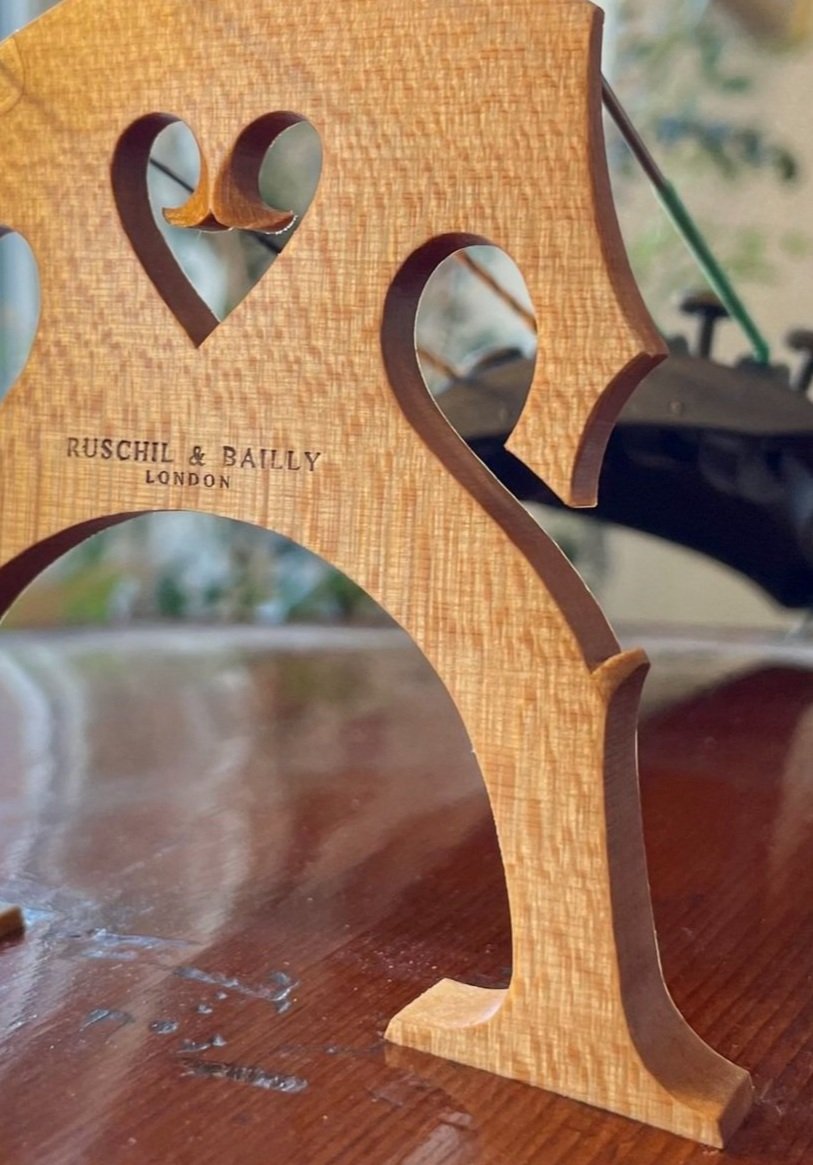Choosing a Belgian or French Cello Bridge
Choosing between the two main styles of bridge for your cello.
Above left: A Belgian style cello bridge.
Above right: A French style cello bridge
There are two main styles of cello bridge which have lasted the centuries, Belgian & French. At Ruschil & Bailly we make both from the highest quality seasoned maple. Both are structurally robust and will last the test of time.
As both can be tailored to the players exact requirements in terms of string heights and curve for playability, the question of which to choose is aesthetic and tonal.
As a general guide, if all other variables are the same, consider the following comparison between both styles:
Belgian
Focused
Clean
Powerful
Direct
Soloistic
French
Broad
Complex
Rich
Textured
Responsive
Pairing the perfect bridge with your cello
There are a multitude of things a good luthier can do to help find you the perfect tone for your cello. One of the options is to choose a bridge that either balances or accentuates the tone of your cello.
If your cello is naturally powerful, direct and focused, you may choose to balance that with a French bridge to add more complexity and richness, adding another dimension. Alternatively you may choose to push it further in that direction by choosing a Belgian bridge creating an even more direct and soloistic instrument.
Conversely if you have a cello which is naturally very open, rich and warm you may choose to add a layer of directness and punch by fitting a new Belgian bridge to it to lift it up. Choosing a French bridge will further increase the texture of the sound, accentuating its richness and more open characteristics.
Aethestics
Aesthetically a French bridge has a more angular style, with straighter edges and a more direct appearance. A Belgian bridge has a more curvaceous style with a rounded appearance. This can be noticed especially in the arms and the heart. The arms of a Belgian bridge are curves, sweeping down and around. The arms of a French bridge are joined at a point, creating a sharper look.
The Ruschil & Bailly style of bridge making has a heart shape on both designs. The heart of a French style bridge is taller and a lot straighter, this adds to the flexibility of the wood. A Belgian bridge has a wider, curved heart, leaving more wood below. This adds to the stiffness of the bridge, creating that punchier, more focused sound.
Below are examples of both styles:
If you would like to book a session to discuss your options for choosing a new bridge for your cello, following the link by clicking here.
Ruschil & Bailly also offer comprehensive sound adjustment sessions to maximise the potential of your instrument. If you would like to find out more about these sessions, it is available on the Sound Adjustment page.
